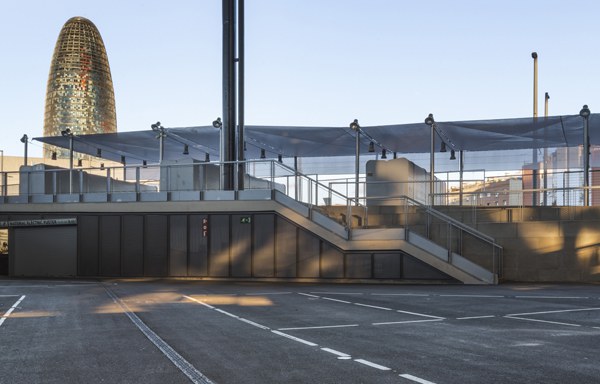Introduction
The aerospace, energy, automotive, and other industries are continually seeking materials that are lighter, stronger, and more resistant to heat and corrosion to improve performance and efficiency. This demand has led to significant advances in premium alloys with exceptional mechanical, thermal, and chemical properties. As researchers develop innovative alloy compositions and manufacturers implement advanced processing techniques, premium alloys enable lighter vehicles, more powerful engines, longer-lasting parts, and new possibilities across industrial applications. This article will examine the latest generation of high-performance alloys, the techniques used to create them, and how they meet the needs of various industries.
Nickel-Based Superalloys
Nickel-based superalloys are prized for their high strength and resistance to heat and corrosion. These properties make them ideal for parts and components exposed to extreme environments, such as the hot sections of jet engines and land-based gas turbines. Superalloys are defined by their complex chemical compositions, which typically include nickel, chromium, cobalt and other alloying elements. The nickel imparts strength and ductility at high temperatures. Meanwhile, elements like aluminum and titanium promote the formation of reinforcing gamma prime phases in the alloy microstructure.
Superalloy chemistry and processing advances now enable increasingly higher operating temperatures and longer service life. For example, inconel 718 round bar and other superalloy products made through powder metallurgy techniques can yield parts with very fine and uniform microstructures. This improves creep resistance and fatigue life compared to conventionally cast alloys. Superalloys also benefit from protective coatings, enhancing corrosion and oxidation resistance. These capabilities allow superalloys to meet performance requirements in the hottest sections of modern turbine engines.
Titanium Alloys
The combination of high strength-to-weight ratio, fatigue resistance and corrosion resistance make titanium alloys highly desirable where light weight and reliability are critical. The aerospace industry has long applied these alloys in aircraft and jet engine components. The newest titanium alloys offer even better strength, ductility and damage tolerance through optimized compositions and thermomechanical processing.
For example, when a small percentage of niobium is added to titanium, an alpha-beta alloy is produced with higher strength at low to moderate temperatures. Processing innovations also continue to push the limits. Methods like hot isostatic pressing can reduce internal defects in cast or powder metallurgy titanium parts for greatly improved fatigue life. Such advances enable wider use of titanium alloys to reduce weight in aerospace, automotive, marine, and biomedical applications.
Magnesium Alloys
Magnesium is the lightest structural metal, making magnesium alloys an excellent choice to lower weight in transportation equipment, consumer products, and other applications. Pure magnesium has relatively low strength and poor corrosion resistance, but alloying can significantly improve these properties. Combining zinc, aluminum, manganese, rare earth metals, and other elements creates high-strength, creep-resistant magnesium alloys for die-casting and wrought products.
Recently, formulations using additions of rare earth elements have become popular. These alloys provide high strength and durability while maintaining magnesium’s advantage of low density. Automakers have adopted magnesium alloys for seat frames, steering wheels, and other components. The use of laptops and cell phones is also growing. Further improvements in corrosion resistance will help expand magnesium alloy applications going forward.
Aluminum Alloys
Known for good strength-to-weight characteristics and corrosion resistance, aluminum alloys are ubiquitous in aerospace, automotive, and other industries. New aluminum alloy chemistry and processing continue advancing the capabilities of these lightweight structural materials. Aluminum-lithium alloys offer improved stiffness and lower density versus traditional alloys, making them attractive for aircraft skin panels.
Meanwhile, innovative thermal and mechanical processing gives aluminum products exceptional tensile and fatigue strength. For example, when specific aluminum alloys are processed using equal channel angular pressing, ultra-fine grains form in the alloy microstructure. This produces aluminum with strength comparable to mild steel at a fraction of the weight. Such materials are opening up new possibilities to reduce weight in vehicles and other applications further.
Metal Matrix Composites
Combining a metal matrix with reinforcing ceramic or metallic particles yields metal matrix composites (MMCs) with superior strength, stiffness, and wear resistance compared to conventional alloys. Materials like silicon carbide and boron carbide can reinforce aluminum and titanium matrices, while metallic particles reinforce magnesium and nickel alloy composites. The reinforcement makes MMCs harder and more resistant to friction and high temperatures. Automakers already use MMCs for brake rotors, drive shafts, and other components.
Other promising aerospace applications include landing gear and satellite equipment. Processing challenges have limited widespread adoption so far. However, as researchers fine-tune MMC fabrication methods, these materials could find broader use. Lower manufacturing costs will also help drive adoption. MMCs have great potential for performance gains in harsh operating environments if the materials and manufacturing challenges can be overcome.
Intermetallics
Intermetallics are a relatively new class of structural materials that have ordered crystal structures and contain two or more metallic elements. The order and chemical interactions between the constituent metals give intermetallics exceptional high-temperature strength. Many also exhibit useful electrical and magnetic properties. For example, nickel aluminides containing 30-40% aluminum have good oxidation resistance and low density. Iron aluminides with aluminum and chromium additions offer elevated temperature strength exceeding stainless steel.
The downside is that intermetallics tend to have low room-temperature ductility and fracture toughness. Alloying additions and microstructural control during processing can help overcome these issues. Refinement through powder metallurgy is another approach. As researchers elucidate the complex relationships between composition, structure, and properties, functional intermetallics will emerge for lightweight, high-temperature applications. We have likely only scratched the surface of what highly ordered intermetallic alloys may ultimately enable.
Conclusion
From jet engine turbines to automotive components, industries rely on premium alloys for designs and previously impossible processes. Sophisticated modern alloys leverage synergies between their elemental constituents to achieve extraordinary combinations of strength, temperature resistance, and other properties. Meanwhile, advanced manufacturing techniques help realize alloys’ full potential. Further breakthroughs will expand the design possibilities and operating envelopes across transportation, energy, aerospace, and other technology arenas. New premium alloys are helping make products lighter, stronger, more durable, and more energy efficient than ever.





